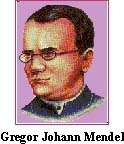Hi there readers! I promised my students that I'm gonna upload this video that i presented in class this week. They love this and you might like it too :)
But before that, I'm gonna give you a brief introduction to a plant process called photosynthesis. "Photo" is a Greek word for "light," and "synthesis" means "to combine." We all get our energy from the food we eat which we get directly or indirectly from plants. How about plants?
So, photosynthesis can be defined as a process whereby green plants make food (glucose) using the raw materials carbon dioxide and water in the presence of sunlight. This process also releases oxygen. Here's the word equation for photosynthesis:
Plants and animals (including us human) need each other to survive. We breathe out carbon dioxide which is needed for the plant during photosynthesis. Plants photosynthesize to make food and oxygen that we need. Other than oxygen used for respiration in living things, photosynthesis is also important whereby the oxygen released is used to purify the air by removing carbon dioxide in the atmosphere which can cause global warming.
Ok ok...enough already. Now it's time for you to enjoy the video. :))
Here are the lyrics for you to sing along! You might as well learn the lyrics...It's a fun way to learn! :D
If you want to know,How a plant grows,It takes water, air and sunlight,and makes cellulose...
Every plant can do this,Fundamental process,and we can call this,Photosynthesis!
Unlike me and you,Plants need CO2,and they make oxygen,That stops us turning blue...
Every plant can do this,Fundamental process,and we can call this,Photosynthesis!
It's a miracle,How all the chlorophyll,Captures sunlight in the leavesof the plants and the trees...
A plant of any size,Can do this if it tries,But we're not green so we can'tPhotosynthesize...
Every plant can do this,
Fundamental process,and we can call this,Photosynthesis!
It's a miracle,How all the chlorophyll,Captures sunlight in the leavesof the plants and the trees...
Every plant can do this,
Fundamental process,and we can call this,Photosynthesis!
Every plant can do this,Fundamental process,and we can call this,Pho-to-syn-the-sis! (photosynthesis)
Click the link below to test your knowledge of Photosynthesis!
 -->
-->













